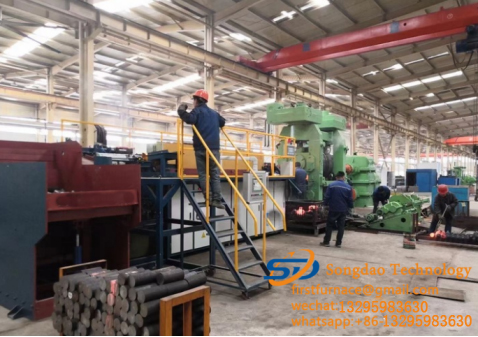- 10
- Feb
Composition of refractory materials for induction heating furnace
Composition of refractory materials for furra e ngrohjes me induksion
For the bushings made of refractory materials for induction heating furnaces, the relevant dimensions are listed in Table 5-1 for reference when selecting. Bushings made of refractory materials should not be too long, preferably not more than 1m, otherwise it will be difficult to manufacture. When the sensor is very long, it can be connected with several bushings. The thickness of the entire heat-insulating layer and the heat-resistant layer should not be too large. If it is too large, the gap between the blank and the induction coil will increase, which will reduce the power factor and heating efficiency of the inductor. Generally, the thickness of the two is 15 ~ 30mm , The larger the diameter of the blank takes the larger value.
Table 5-1 Dimensions of refractory bushings
| Coil inner diameter/mm | D | d |
| 70 | 60 | 44 |
| 80 | 68 | 52 |
| 90 | 78 | 62 |
| 100 | 88 | 72 |
| 110 | 96 | 76 |
| 120 | 106 | 86 |
| 130 | 116 | 96 |
| 140 | 126 | 106 |
| 150 | 136 | 116 |

In the introduced induction heating furnace, the induction coil and the refractory material are cast as a whole without separating the thermal layer and the heat-resistant layer. There are also domestic manufacturers of induction heating furnaces that use this casting method for heat insulation and heat resistance. However, during use, if it is found that the casting layer is damaged or the induction coil is leaking, the induction coil is difficult to repair, and it has to be replaced with a new induction coil.
